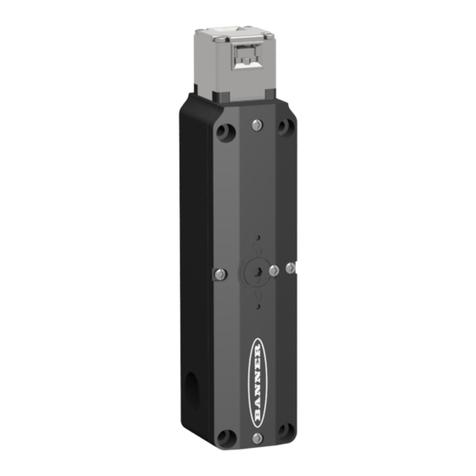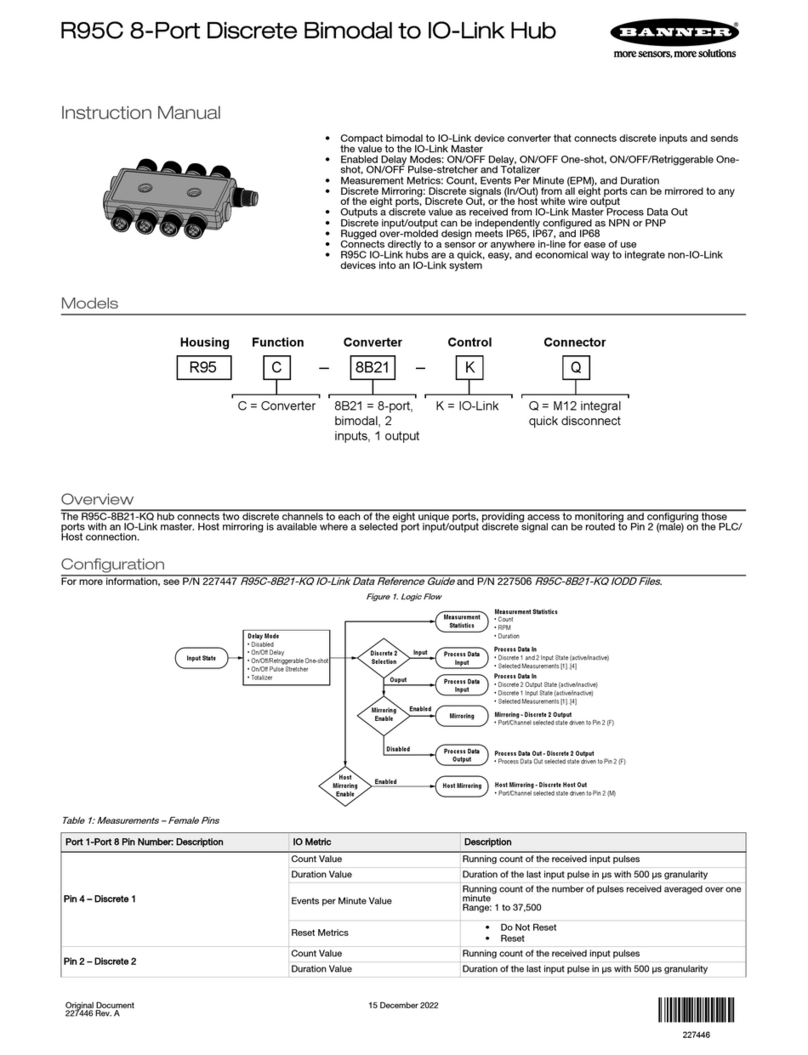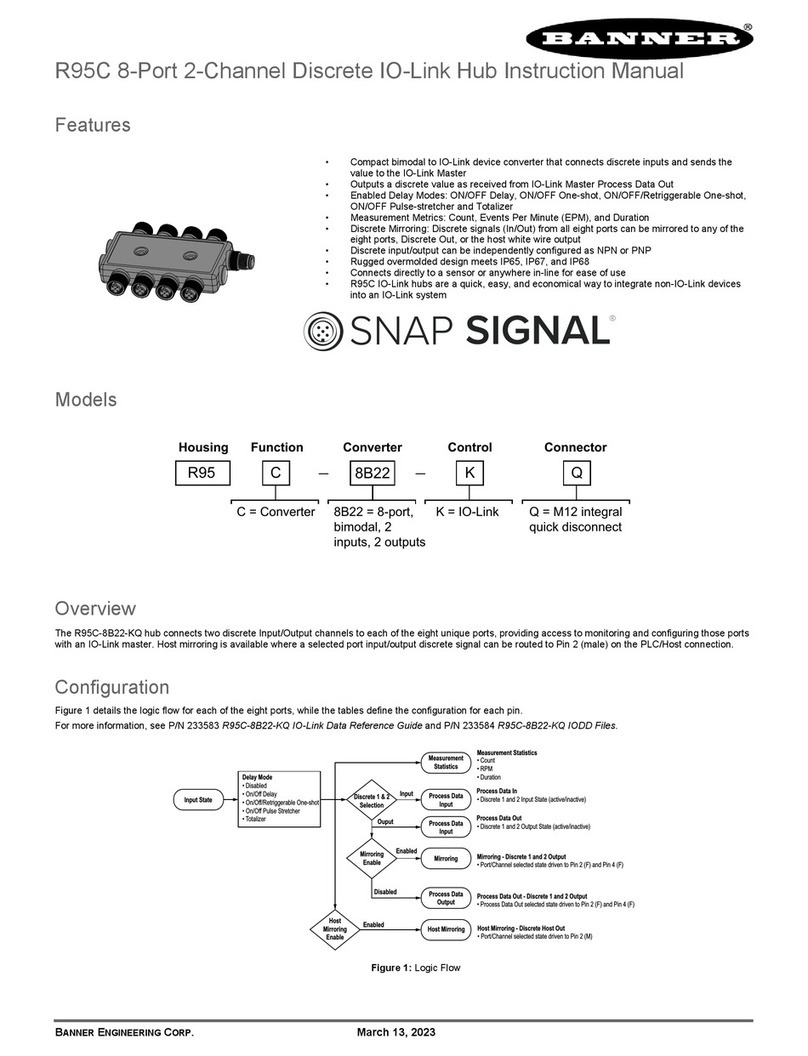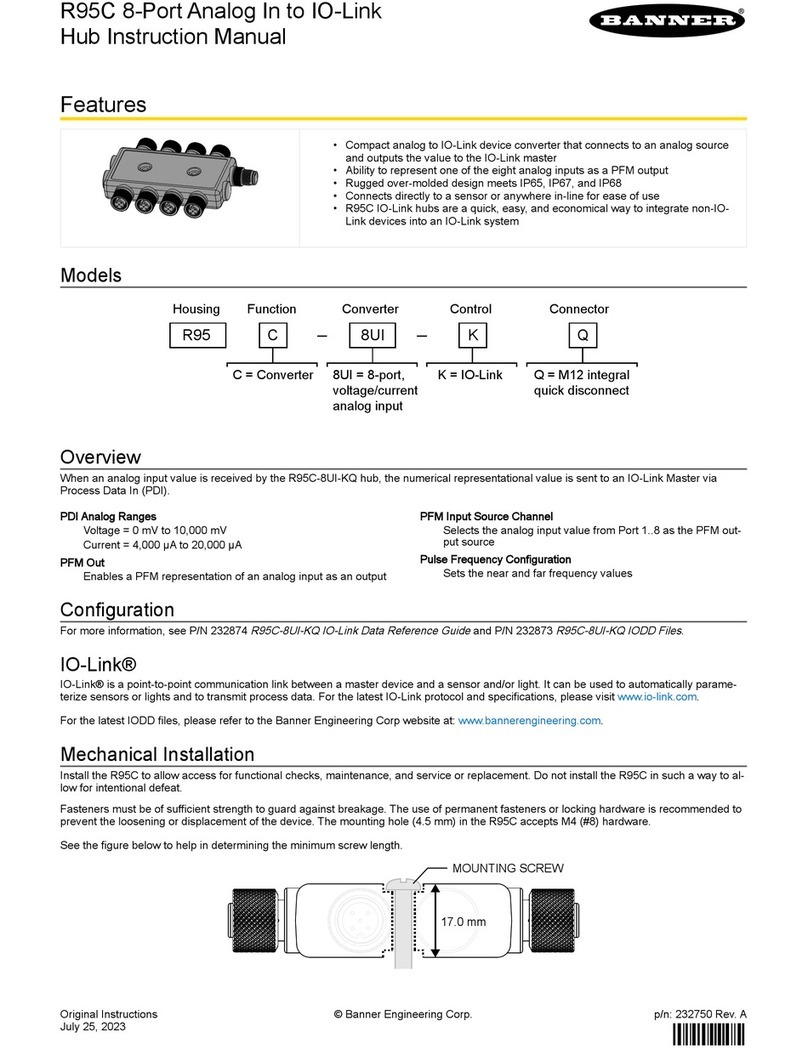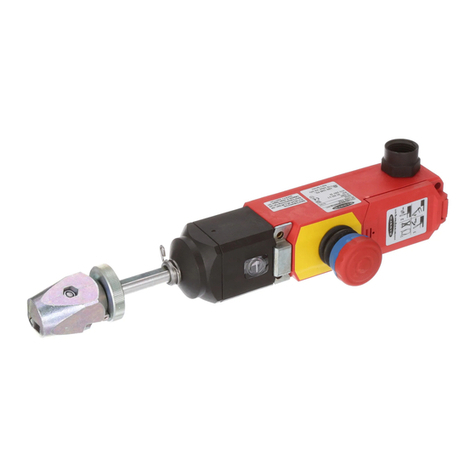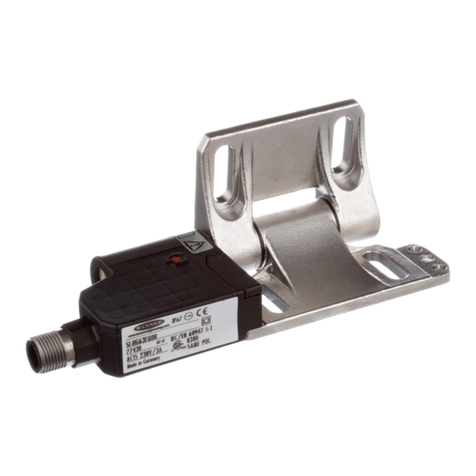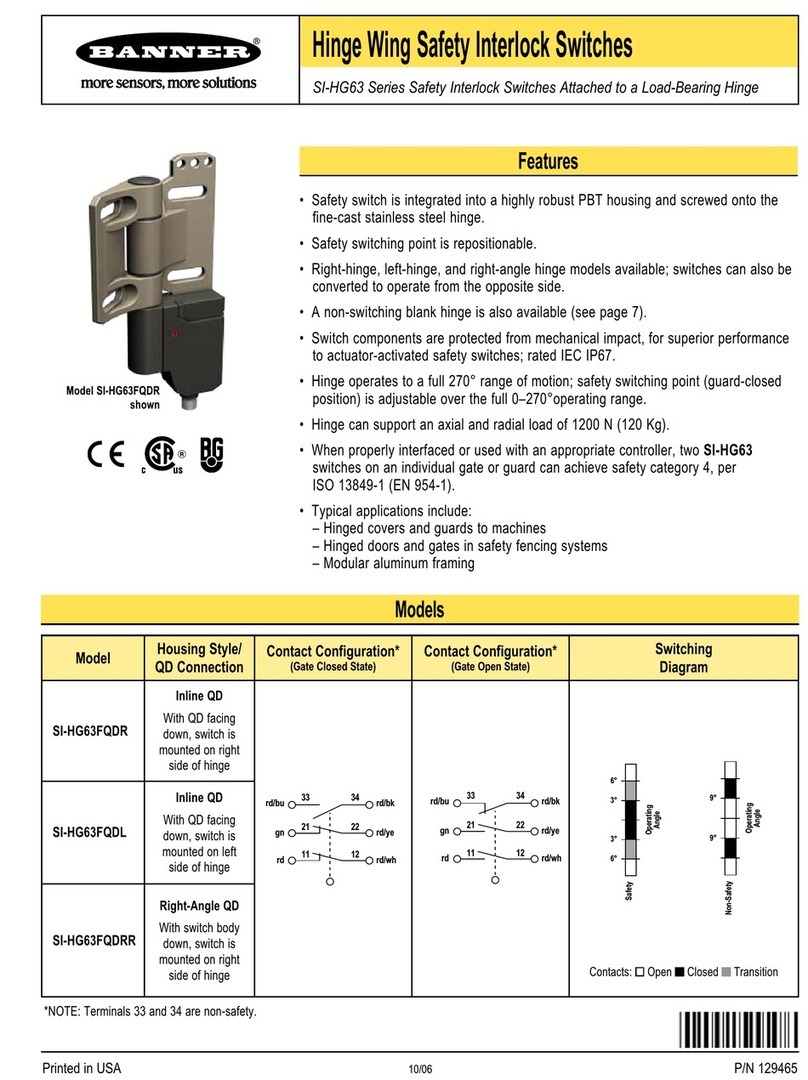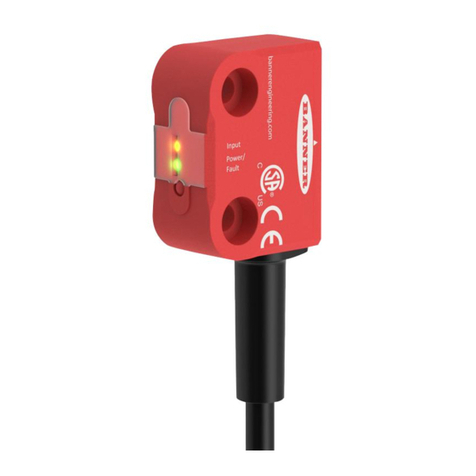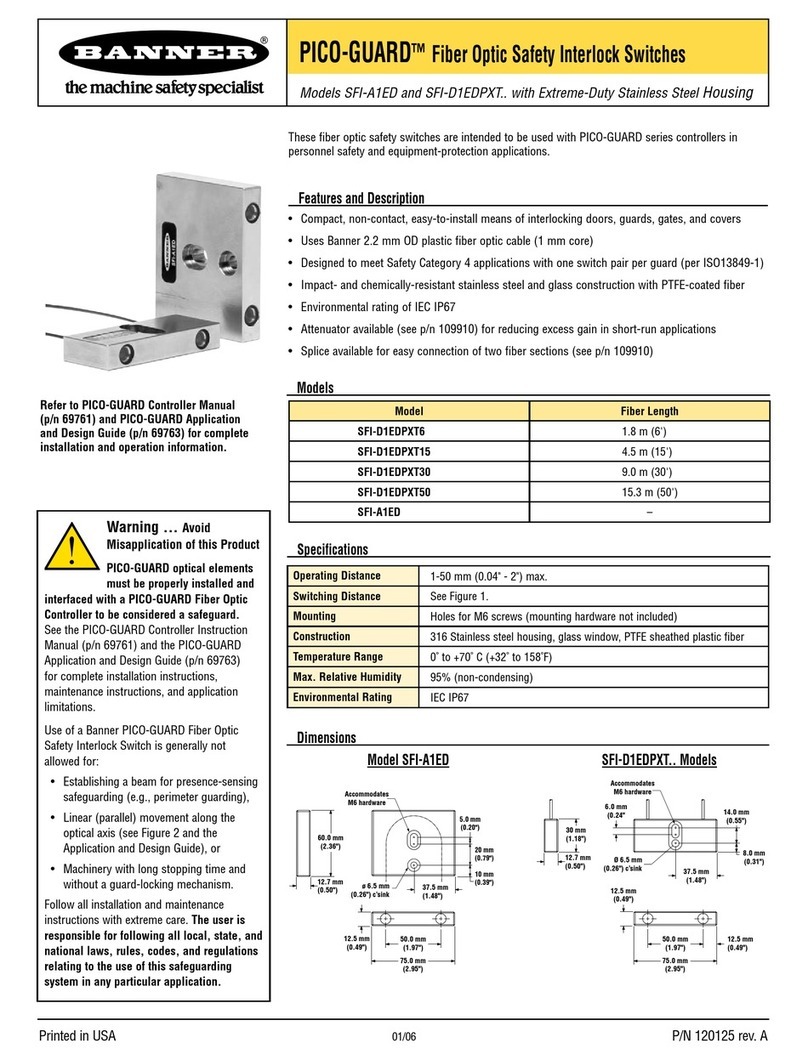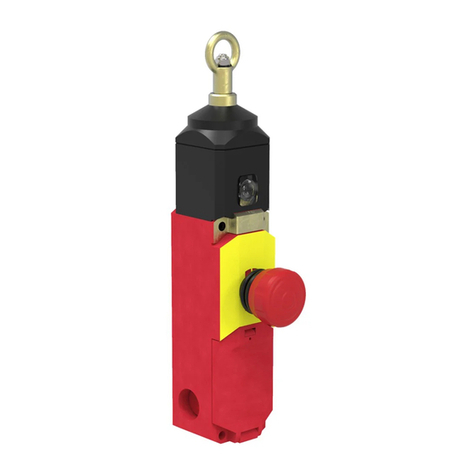
4 © Banner Engineering Corp. www.bannerengineering.com
INSTALLATION INSTRUCTIONS
3. Installation Instructions
3.1. Installation Requirements
The following general requirements and considerations apply to the installation of interlocked gates and guards for the purpose of safeguarding.
In addition, the user must refer to the relevant regulations and comply with all necessary requirements. See ANSI B11.19, or ISO 14119 and ISO
14120, or the appropriate standard.
Hazards guarded by the interlocked guard must be prevented from operating until the guard is closed; a stop command must be issued to the
guarded machine if the guard opens while the hazard is present. Closing the guard must not, by itself, initiate hazardous motion; a separate
procedure must be required to initiate the motion.
Locate the guard an adequate distance from the danger zone (so the hazard has time to stop before the guard is opened sufficiently to provide
access to the hazard). Guard locking or supplemental safeguarding must be used if the overall stopping time of the machine or the time to remove
the hazard is greater than the time to access the guarded area. The guard must open either laterally or away from the hazard, not into the safe-
guarded area. The guard also should not be able to close by itself and activate the interlocking circuitry. The installation must prevent personnel
from reaching over, under, around or through the guard to access the hazard. Any openings due to positioning, movement, or misalignment in
the guard must not allow access to the hazard—see ANSI B11.19, ISO 13855, ISO 13857, or the appropriate standard.
The guard must be strong enough and designed to protect personnel and contain hazards within the guarded area that can be ejected, dropped,
or emitted by the machine. Mount the SI-RF Safety Switch securely so that the physical position cannot shift, using reliable fasteners that require
a tool to remove. Mounting slots in the housing, if provided, are for initial adjustment only; final mounting holes (round) must be used for perma-
nent location. The switches, actuating systems, and actuators must not be used as a mechanical or end-of-travel stop.
When the guard is closed, the actuator is guided to the sensor. When the switch on distance is reached, the sensor detects the actuator code.
If the sensor detects an acceptable code it turns the output signal switch device (OSSD) safety outputs (OSSD1 and OSSD2) ON. When the
guard is opened, the actuator is removed from the response range of the sensor. The sensor switches the safety outputs (OSSD1 and OSSD2)
OFF.
See Mechanical Installation on page 5, Electrical Installation on page 9, Switching Diagrams, and Specifications on page 16 for additional infor-
mation.
Design and install the safety switches and actuators so that they cannot be easily defeated. Measures to minimize defeat (bypassing) of inter-
locking safety switches include:
• Minimizing motivation for defeating interlocking by providing training, supervision, and efficient means for machine setup/adjustment,
operation and maintenance
• Limiting accessibility to the interlocking device, such as mounting out of reach, mounting behind a physical obstruction, mounting in a
concealed position
• Preventing the switch or the actuator from being disassembled or repositioned that compromises the safety function. (for example,
welding, one-way screws, riveting)
• Using hardware that requires a tool to remove that is not readily available.
WARNING
!
PROPERLY INSTALL THE INTERLOCKED GUARDS
Failure to follow these guidelines could result in serious injury or death.
• At a minimum, the interlocked guard must prevent hazards when not fully closed and must prevent access
to the hazards through any opening in the guard.
• Install the safety switches and actuators so they cannot be easily defeated and are not used as a mechan-
ical or end-of-travel stop.
• The user must refer to the relevant regulations and comply with all necessary requirements. See ANSI
B11.19, or ISO 14119 and ISO 14120, or the appropriate standard.
CAUTION
!
DO NOT USE THE SAFETY SWITCH AS A MECHANICAL OR END-OF-TRAVEL STOP.
Catastrophic damage can cause the safety switch to fail in an unsafe manner (that is, loss of the switching ac-
tion).
• Limit the movement or rotation of the guard to prevent damage to the safety switch or the actuator.
